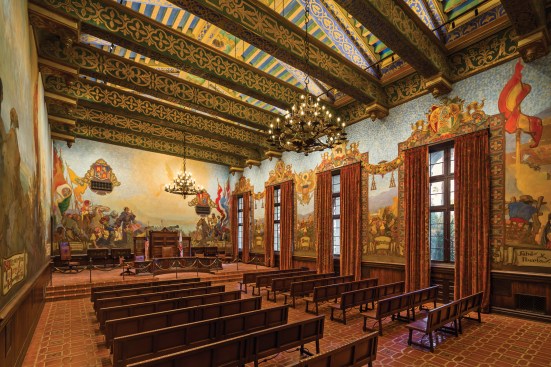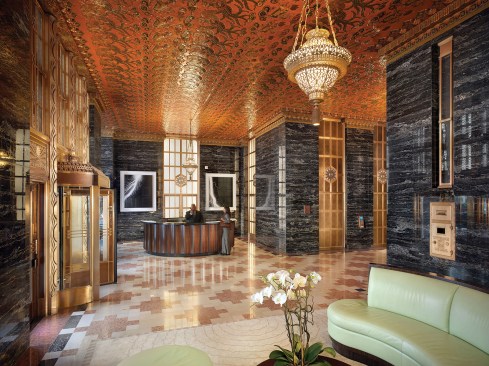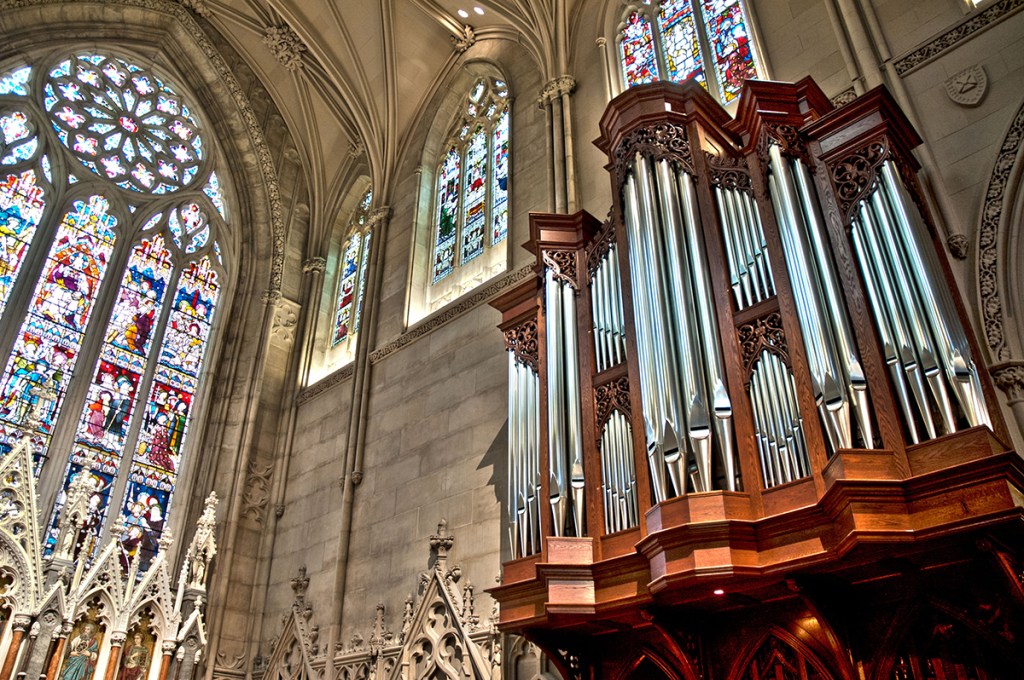How do you light in a historic context? This was one of the main questions that challenged the AL Design Awards jury this year. It’s a multidimensional issue, as a lighting designer needs to try to separate the stylistic approaches of a previous era from the technical strategies of today. Of the submissions for 2016, three projects in particular embodied the complexity of this issue (clockwise from above right): the Grace Church renovation in New York City; the Mural Room in the Santa Barbara, Calif., courthouse; and the 140 New Montgomery lobby renovation in San Francisco. Putting aside the particular architectural styles of each—Gothic-inspired, Spanish Colonial, and Art Deco, respectively—there is no doubt that the new lighting employed for each transforms their spaces and brings to life architectural details that were once obscured.
In the case of the renovation of Grace Church, on Broadway near New York University, Cline Bettridge Bernstein Lighting Design’s scope of work was limited to the area around the alter just beyond the transept. The firm was asked to remedy problems with previous additions of downlights and to reduce the glare that obscured the rector’s view of the congregation.
For the Santa Barbara Courthouse’s Mural Room, Ann Kale Associates had to find a way to provide illumination for a space that had only ever been lit by two chandeliers and available daylight. Further, any new lighting solution had to do so without touching the delicate plaster ceiling and walls.

Ciro Coelho
For the lobby at 140 New Montgomery, HLB Lighting Design took its cues from the Art Deco surrounds to provide an illumination level that would meet contemporary needs and energy requirements but use existing architectural elements to bridge the gap.

Rien van Rijthoven
So, how do you strike the right balance? These three projects met their tasks and went beyond. They offer a variety of solutions and exemplify the particular difficulties that lighting designers face in these scenarios.
